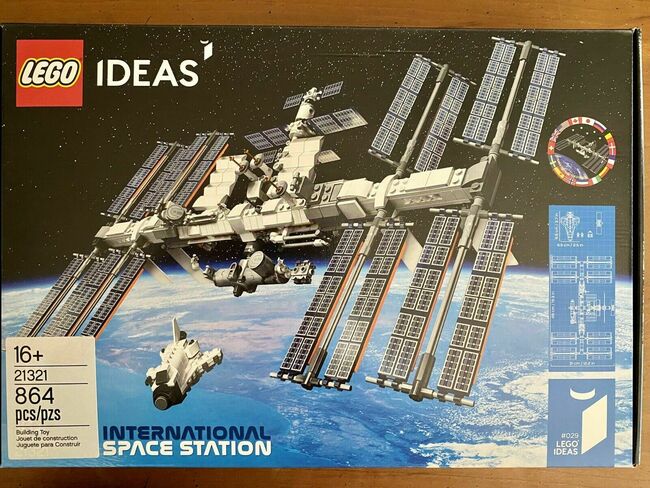
I wouldn't call the build flimsy, but it's tricky to apply the force to slide the modules on the axle, while keeping the model in place. This start out as a long axle that gets fixed in the back, on which the modules are slided one by one. In the back, even more modules are added. The long part is slided over an axle to give it more structural integrity.

On the front, several modules are added, including a robotic arm. This part is uninhabited, and serves as a structure to hang the solar panels and radiators onto.īag 4 starts the real work for me. I wouldn't mind throwing all bags on 1 pile and build from there.īag 3 starts the main truss.

You might notice, that the build stages are pretty small. Left bottom appears to be a Boeing CST-100 Starliner, the left top is a SpaceX Dragon, and on the right is a Soyuz capsule.īag 2 builds the stand. The space shuttle is of course an easy one to recognize. I had to do some research to figure out what exactly it was I was building. The build begins simple with a few space crafts. Recolors:Īnd there are a few parts in rare colors or prints, meaning they appear in 3 sets or less: Bricks Round and Cones: 13 unique parts, 30 quantity.Īs usual in LEGO Ideas sets, there are no new molds.Plates Special: 29 unique parts, 114 quantity.Light Bluish Gray: 43 unique parts, 224 quantity.The set contains 864 parts and 27 spares, in 14 colors, and 29 part categories, with a total of 186 unique parts/color combinations. There are 126 pages with 145 building steps. In the intro is information about the ISS, the fan designer, the voting process, the set designers and other space-themed LEGO Ideas sets. More information can be found on the ESA Site. The original plan was to also function as staging base for missions to the Moon, Mars and asteroids. The main function of the station is being a micro gravity laboratory and observation. Russia is planning to add more modules this year (2020). The last large presurised module was added in 2011, followed only by an experimental inflatable module in 2016. The station is divided in 2 sections, the Russian Orbital Segment (ROS), operated by Russia, and the United States Orbital Segment (USOS), operated by other nations. The station has been built in stages, adding modules to the growing station. The first segment was launched in 1998, with the first long-term residents ariving on November 2nd 2000, and has been inhabited ever since. The International Space Station, or ISS, is a joint operation of NASA, Roscosmos, JAXA, ESA and CSA. And the International Space Station, designed by Christoph Ruge, won this extra round. But rejoice! Because LEGO Ideas turned 10 years old, TLG decided to dive into the archives, and give 4 turned down 10k ideas a second chance in an extra voting round. I was disappointed when it didn't make it into the next phase of becoming a set. When the project reached 10,000 votes, it went into the review phase. Anatomini came very close to becoming a set.


I think this is the first LEGO Idea I've voted for that actually made the 10,000 votes and win. So, this is a no-brainer: I must have this set. And I didn't mind volunteering to review the 10266-1 NASA Apollo 11 Lunar Lander last year. It's one of the very few models with a permanent display in my living room, along with the 8480-1 Technic Space Shuttle. The 21309-1 Saturn V is my favorite recent, non-Technic build, both in build itself and in end result. Let's start with: I love space, space travel, and everything around it. I'm very excited to look at their latest product, the 21321-1 International Space Station. LEGO Ideas & Space has proven to be a fruitful combination.


 0 kommentar(er)
0 kommentar(er)
